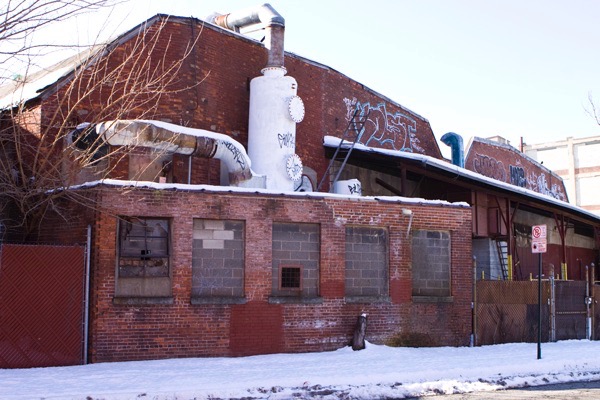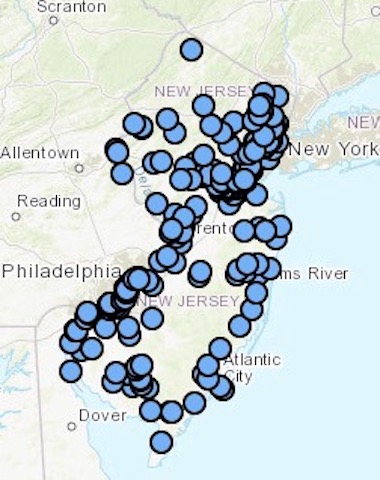A Guide To Protecting Your Health
Often, the reliance on pollution control technology is based on economics, resulting in DEP – without your knowledge or consent – trading off increased risks to your health for reduced industry compliance costs. Are you OK with that?
The Murphy DEP is issuing hundreds of air pollution permits across the state of NJ that allow industrial polluters to emit millions of pounds of hazardous air pollutants.
Many of these hazards air pollutants cause cancer.
Many of the industrial polluters are located in close proximity to residential neighborhoods, schools and hospitals, etc, where “sensitive receptors” are exposed to polluted ambient air quality.
Many of these communities are densely populated, many with significant populations of poor, minority and/or disadvantaged people who bear a disproportionate pollution burden, and some are DEP designated “environmental justice” communities. (DEP recently engaged an EJ process, but, based on prior experience, it won’t address all these scientific, regulatory and policy flaws and issues I outline below. And the US Supreme Court’s Sandoval decision makes it virtually impossible to enforce a “disparate impact” discrimination environmental justice violation under the US Civil Rights Act, a bad decision that overrides a favorable US District Court environmental case we wrote about in Camden, NJ).
The communities in which these permits are issued have virtually no knowledge of or participation in the permit process (DEP recently quietly adopted a highly technical and useless webpage):
In contrast, the polluters are provided unlimited access to DEP technical staff and managers and are well represented by hired guns: engineers, lawyers and lobbyists.
There are no federal EPA or State DEP health based ambient air quality standards to protect public health from hundreds of hazardous air pollutants, not all of which are even regulated. The permits are based on pollution control technology, not protection of public health.
Often, the reliance on pollution control technology is based on economics, resulting in DEP – without your knowledge or consent – trading off increased risks to your health for reduced industry compliance costs. Are you OK with that?
The DEP’s permit review and health risk assessment screening processes have several significant flaws, including:
- failure to consider the cumulative health risks and impacts of multiple pollution sources;
- failure to consider the health risks and impacts of multiple pollutants;
- failure to consider exposure by multiple pathways: air, water, soil, food, occupational;
- failure to adequately consider health risks and impacts on sensitive receptors, like infants;
- failure to consider actual ambient air pollution levels in the community (instead DEP limits the spatial consideration of the health risks and impacts at the facility “fence line”);
- failure to require statistically valid characterization of baseline ambient air quality;
- failure to advance a “precautionary” public health approach to scientific uncertainty;
- failure to require safer alternatives, like pollution prevention and state of the art technology;
- failure to phase out unacceptable hazards, like proposed perc phase out that was revoked
- failure to consider disproportionate burdens on minority and/or disadvantaged communities;
- failure to adequately inform and involve the community in permit reviews
- failure to adopt health based ambient air quality standards for hazardous air pollutants;
- failure to compile a state-wide database on total HAP emissions and ambient air quality;
- failure to adequately regulate fugitive emissions and small sources of pollutants;
- failure to make all of this transparent and understandable to the impacted public; and
- failure to provide access and technical assistance to the public, while providing abundant assistance and access to polluters, including by the DEP Office of Permit Coordination, confidential pre-application conferences, unlimited and daily access to the DEP permit engineers, and frequent access to DEP managers.
In order to provide assistance to concerned citizens, many of whom may be totally unaware of this situation, I decided to submit last minute comments on a DEP proposed draft air pollution permit. These comments can provide a template for citizens to ask DEP tough questions and hold polluters accountable.
I submitted these generic comments in question form on the DEP draft permit for the NuSTAR facility because I learned about the draft permit just hours before the public comment period closed earlier today (8/23/19) and because it was the only draft permit o the DEP website where the public comment period was still open (the rest were closed).
I urge people and environmental groups who are interested in protecting their health from these industrial hazards air pollutants (HAPs) – many of which are carcinogenic and/or have other serious adverse health effects – to visit the DEP air permit “public notice” website to monitor DEP permit activity and participate in the permit review process.
Here is the “Technical Manual” under which DEP conducts reviews – Technical Manual 1003 – Guidance on Preparing a Risk Assessment for Air Contaminant Emissions (probably the most important environmental document you never heard of).
Here is a template of the kind of questions to ask DEP:
I submit the following comments on the DEP’s proposed draft permit for NUSTAR, Paulsboro:
1. I request that DEP hold a public hearing in Paulsboro and explain this draft permit to the community and provide a meaningful opportunity for the public and community to review and comment on it.
The basis for this request is that there is significant public interest in air quality, hazardous air pollutants, and chemical risks in Paulsboro, given the density of petro-chemical mobile and stationary sources, a history of plant upsets, ongoing permitted emissions, fugitive emissions, catastrophic accidents and health impacts.
2. I request that the DEP extend the public comment period by 90 days to accommodate a public hearing and allow for informed, meaningful public comment.
3. According to the draft permit:
“Emission Unit U100/OS – Stack height above ground shall be raised from 20 ft to 35 ft based on the Facility-Wide Air Toxics Risk Assessment dated 3/22/2019, to reduce the benzene cancer and non-cancer short-term risk at the facility fenceline.”
Based on this statement, I ask the following questions and make the following comments:
a) what were the numeric risks to human health quantified by the Facility-Wide Air Toxics Risk Assessment ? Those risks should be disclosed to the community. The draft failed to do that.
b) The point of compliance appears to be the “fence line”. Did the Facility-Wide Air Toxics Risk Assessment analyze risks beyond the fence line? If so, why were those risks? If not, why not?
The Department must analyze health risks to the nearby sensitive residential receptors beyond the fenceline. It appears that the draft permit fails to do that.
c) It appears that the risks are driven by benzene. Did the Facility-Wide Air Toxics Risk Assessment quantify cumulative risks based on multiple hazardous air pollutants? If so, what were the results? If not, why not?
The Department must analyze cumulative risks of multiple hazardous air pollutants.
d) Did the Facility-Wide Air Toxics Risk Assessment assess risks based on actual ambient air quality data? If so, what were ambient conditions and where were they measured?
The Department must assess risks based on actual ambient data that is QA/QC valid and statistically representative of ambient conditions.
e) How was the public informed and allowed to participate in the development and review of the Facility-Wide Air Toxics Risk Assessment ?
The Department must involve communities in the science and permit decisions that effect their health.
f) Apparently, the only risk reduction measure considered and imposed by the Department was to raise the stack height by 15 feet. This is improper and not protective of public health. On what basis was the new stack height chosen?
Did the Department consider other alternatives, including pollution prevention? Process modifications? State of the art pollution control technology?
The Department is required to consider these more protective alternative risk reduction measures.
g) Did the Facility-Wide Air Toxics Risk Assessment consider risks of exposure by sensitive receptors, including infants and pregnant women?
The Department must consider risks and protect the most sensitive receptors.
4. The DEP relied on a Facility-Wide Air Toxics Risk Assessment. That assessment was conducted in accordance with a DEP Technical Manual.
The DEP Technical Manual was not adopted formally as a regulation pursuant to the NJ Administrative Procedures Act.
Given this failure and the highly substantive public health and economic implications of application of the Technical Manual, the DEP draft permit violates the NJ Supreme Court’s decision in Metro-Media. Metromedia, Inc. v. Director, Div. of Taxation 97 N.J. 313 (1984)
Accordingly, the Technical Manual may not be enforced until it is formally promulgated as a regulation.
The draft permit is therefore null and void as it violates a Supreme Court ruling and therefore should not be issued in final form.
Respectfully,
XXXXX



Pingback: WolfeNotes.com » DEP Agrees To Hold A Public Hearing In Paulsboro On Toxic Air Pollution Permit
Pingback: WolfeNotes.com » Murphy DEP Urged To Close Regulatory Loopholes On Climate Change, Risk Assessment and Hazardous Air Pollutants
Pingback: WolfeNotes.com » As He Touts Climate & Environmental Justice Policies, NJ Gov. Murphy’s DEP Proposes Renewal of Newark Garbage Incinerator
Pingback: WolfeNotes.com » An Open Letter To NJ’s Black, Poor, and Environmental Justice Communities – You Were Just Sold Out
Pingback: WolfeNotes.com » Cracks Begin To Show In NJ Gov. Murphy’s Sham “Environmental Justice” Legislation
Pingback: WolfeNotes.com » Murphy DEP’s Proposed Clean Air Plan Ignores The Climate Emergency And NJ’s Environmental Justice Law
Pingback: WolfeNotes.com » What A Difference A State (Law) Makes
Pingback: WolfeNotes.com » Lame Duck Kabuki On Fossil Moratorium
Pingback: WolfeNotes.com » Murphy DEP Climate Rule Proposal Entirely Ignores Environmental Justice Issues
Pingback: WolfeNotes.com » The People Of Newark Are Being Duped By DEP Review Of Proposed Fossil Power Plant
Pingback: WolfeNotes.com » Chasing Toxic Unicorns In Woodbridge, New Jersey
Pingback: WolfeNotes.com » Spotlight Gets Suspected Cancer Cluster Story At Colonia High School Wrong (Again!)
Pingback: buy dedicated server